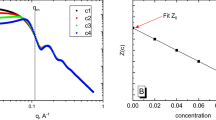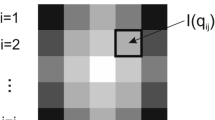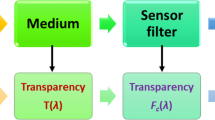Abstract
SUBSTITUTION of a continuous spectrum for monochromatic X-rays in the methods now being used for cytochemical elementary analysis1,2 makes it possible to weigh single cell structures when a sufficiently broad band of a continuous X-ray spectrum is used. The effects of the absorption jumps of the elements in the tissue can be neglected, and the total absorption is proportional to the total mass of tissue. The wave-lengths of the chosen band must be selected properly.
This is a preview of subscription content, access via your institution
Access options
Subscribe to this journal
Receive 51 print issues and online access
$199.00 per year
only $3.90 per issue
Buy this article
- Purchase on Springer Link
- Instant access to full article PDF
Prices may be subject to local taxes which are calculated during checkout
Similar content being viewed by others
References
Engström, A., Acta Radiol. (Stockholm), Supp. lxiii (1946); Nature, 158, 664 (1946).
Engström, A., and Lindström, B., Experientia, 3, 191 (1947).
Author information
Authors and Affiliations
Rights and permissions
About this article
Cite this article
ENGSTRÖM, A., LINDSTRÖM, B. A New Method for Determining the Weight of Cellular Structures. Nature 163, 563–564 (1949). https://doi.org/10.1038/163563b0
Issue Date:
DOI: https://doi.org/10.1038/163563b0
This article is cited by
-
Methoden und Ergebnisse der quantitativen Histochemie in der Hämatologie
Blut Zeitschrift für die Gesamte Blutforschung (1961)
-
Eine Methode zur r�ntgenhistoradiographischen Trockengewichtsbestimmung ohne Verwendung eines Referenzsystems
Histochemie (1959)
-
R�ntgenhistoradiographische und interferenzmikroskopische Trockengewichtsuntersuchungen an Zellausstrichen
Histochemie (1959)
-
Histor�ntgenographische Untersuchungen bei Silikose
Deutsche Zeitschrift f�r die Gesamte Gerichtliche Medizin (1959)
-
Vergleichende röntgenhistoradiographische und interferenzmikroskopische Trockengewichts-bestimmungen
Experientia (1959)
Comments
By submitting a comment you agree to abide by our Terms and Community Guidelines. If you find something abusive or that does not comply with our terms or guidelines please flag it as inappropriate.



